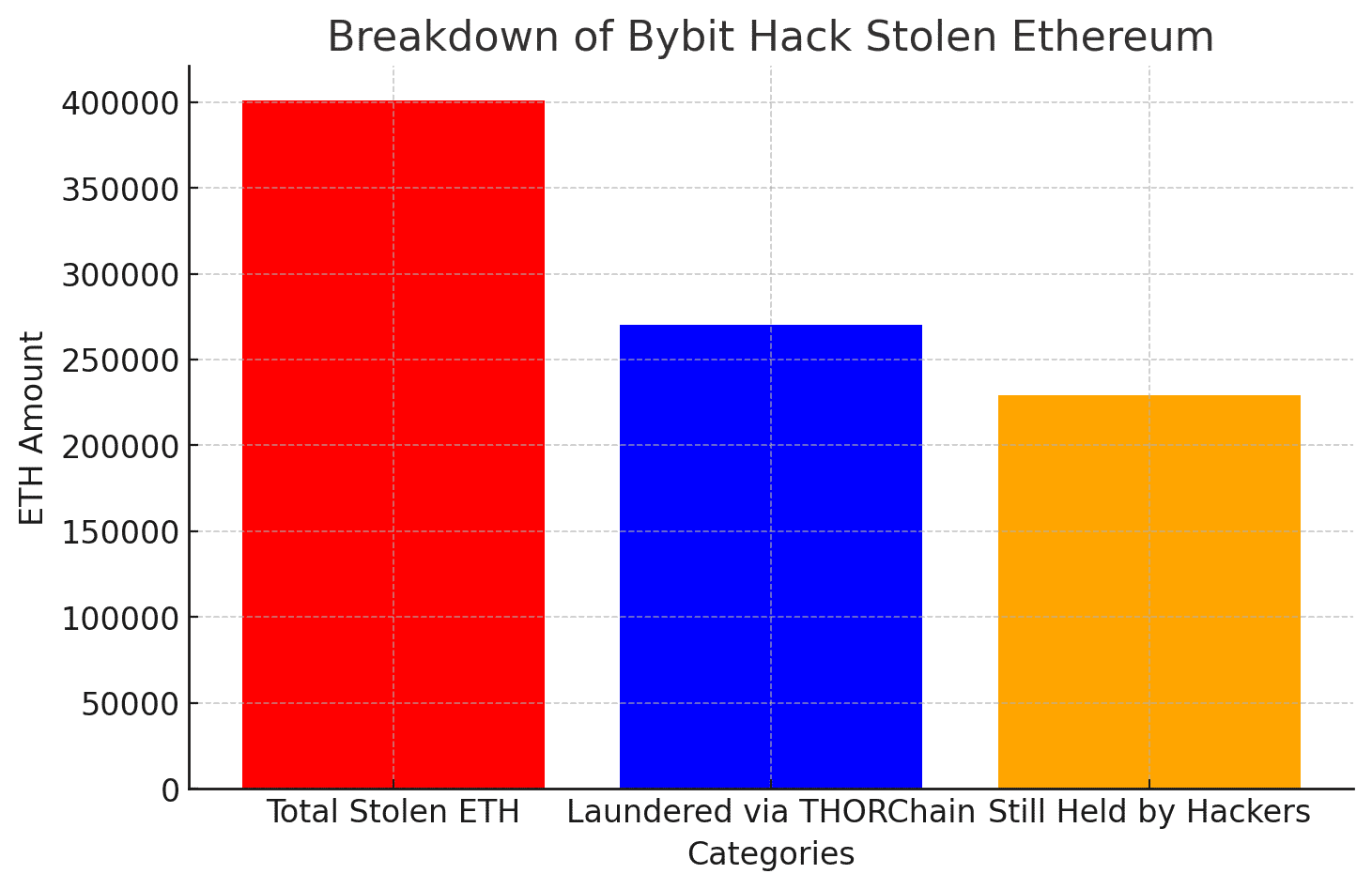In a brazen cyber heist that has sent shockwaves through the cryptocurrency community, hackers have pilfered approximately $1.5 billion in Ethereum from the Dubai-based exchange, Bybit. This incident, now recognized as the largest cryptocurrency theft to date, has raised critical concerns about the security measures of digital asset platforms and the sophisticated tactics employed by cybercriminals.
The Bybit Breach: A Detailed Account
On February 21, 2025, Bybit experienced an unprecedented security breach during a routine transfer from its cold wallet—an highly secure offline storage system—to a warm wallet used for daily operations. The attackers exploited this process, seizing control of the cold wallet and siphoning 401,000 Ethereum tokens to an unknown address. Bybit’s CEO, Ben Zhou, addressed the incident, stating,
“As far as we know, this could be the largest hack in the history of our industry.”
In the immediate aftermath, Bybit assured its users of the platform’s solvency, emphasizing that all client assets remained fully backed and that unaffected wallets and withdrawals were operational. The exchange has since collaborated with blockchain forensic experts to trace the stolen funds and has initiated a recovery bounty program, offering up to 10% of the recovered amount to ethical hackers assisting in the retrieval efforts.

North Korea’s Involvement: The Lazarus Group Connection
Investigations into the breach have unveiled alarming evidence pointing to North Korea’s notorious hacking collective, the Lazarus Group, also known as TraderTraitor. The Federal Bureau of Investigation (FBI) has attributed the theft to this group, highlighting their involvement in previous significant cybercrimes aimed at funding Pyongyang’s nuclear and missile programs. The FBI’s public service announcement stated,
“The Democratic People’s Republic of Korea (North Korea) was responsible for the theft of approximately $1.5 billion USD in virtual assets from cryptocurrency exchange, Bybit.”
The Lazarus Group has a notorious history of targeting financial institutions and cryptocurrency platforms, utilizing advanced phishing schemes and malware to infiltrate systems. Their involvement in the Bybit hack underscores the escalating threat posed by state-sponsored cybercriminals in the digital asset space.
Laundering the Loot: The Role of THORChain
In a calculated move to obfuscate the origins of the stolen funds, the hackers have laundered a significant portion through THORChain, a decentralized cross-chain liquidity protocol. Reports indicate that approximately 270,000 ETH, equivalent to around $605 million, have been funneled through THORChain, representing over half of the misappropriated assets. This strategy complicates tracking efforts, as decentralized platforms often lack the regulatory oversight present in centralized exchanges.
Despite these laundering efforts, the perpetrators still retain roughly 229,395 ETH, valued at approximately $514 million. The movement of such substantial sums through decentralized channels has ignited debates about the necessity for enhanced regulatory frameworks and security protocols within the cryptocurrency ecosystem.

Industry Implications and the Path Forward
The magnitude of the Bybit hack has reverberated throughout the cryptocurrency industry, prompting a reevaluation of security practices among exchanges and custodial services. The incident has also precipitated a decline in cryptocurrency valuations, with Bitcoin and Ethereum experiencing notable drops in the days following the breach.
In response to the theft, Bybit has secured emergency funding to replenish its reserves, ensuring the continuity of operations and bolstering user confidence. The exchange actively enhances its security infrastructure and collaborates with international authorities to pursue the perpetrators and recover the stolen assets.
This event serves as a stark reminder of the vulnerabilities inherent in digital asset platforms and underscores the imperative for robust security measures, comprehensive regulatory oversight, and international cooperation to combat the escalating threat of cybercrime in the cryptocurrency domain.
FAQs
What is the Lazarus Group?
The Lazarus Group, also known as TraderTraitor, is a North Korean state-sponsored hacking organization notorious for executing large-scale cyberattacks, particularly targeting financial institutions and cryptocurrency platforms.
How did the Bybit hack occur?
The breach transpired during a routine transfer from Bybit’s cold wallet to a warm wallet. Attackers exploited this process, commandeering the cold wallet and absconding with 401,000 Ethereum tokens.
What steps is Bybit taking post-hack?
Bybit has assured users of its solvency, secured emergency funding to replenish reserves, and is collaborating with blockchain forensic experts and international authorities to trace and recover the stolen funds.
Glossary
Cold Wallet: An offline cryptocurrency storage method, deemed more secure against unauthorized access.
Warm Wallet: A cryptocurrency wallet connected to the internet, facilitating daily transactions but susceptible to online threats.
THORChain: A decentralized liquidity protocol enabling cross-chain cryptocurrency swaps without reliance on centralized exchanges.
Sources



















































































































